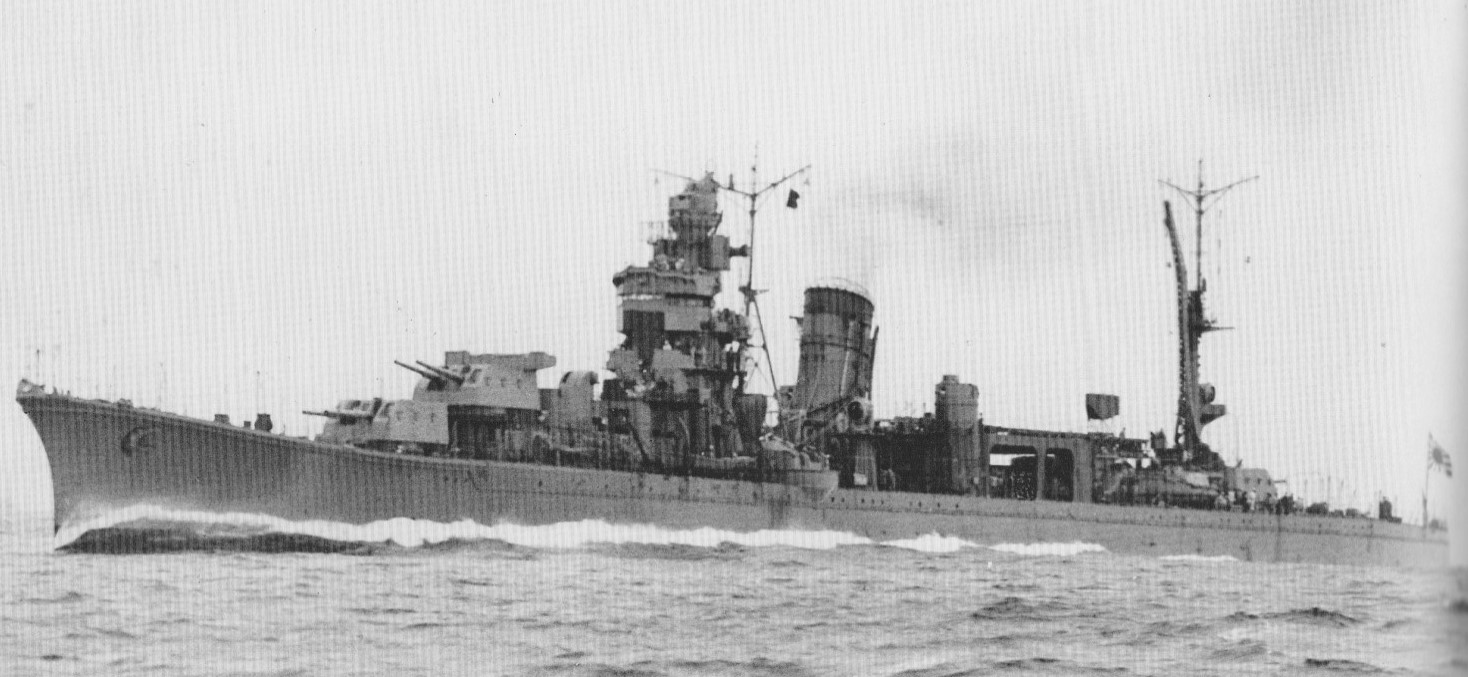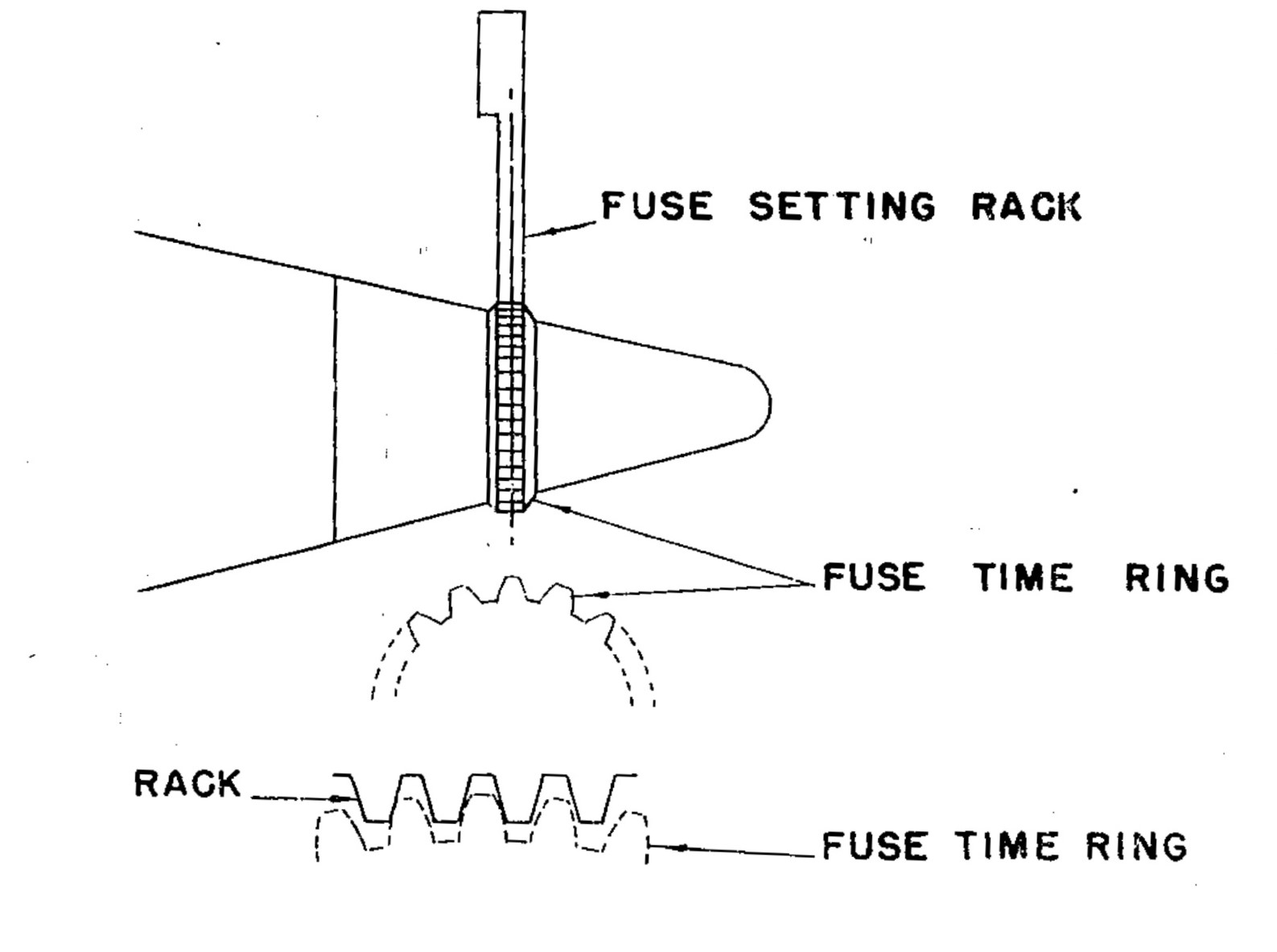
This was an AAA gun used afloat only on the Agano class light cruisers. Four additional weapons were used as coastal batteries at Maizuru, Kyoto. Considered to be a satisfactory weapon with no serious problems. However, it did have a short barrel life.
There were two versions of the gun barrel. Model Type I used a radially expanded, removable lining while the Model Type I2 was of monobloc construction. Both Model Types had breech rings and horizontal sliding breech-blocks. A total of 28 guns were produced between 1940 and 1944.
Actual bore diameter was 7.62 cm (3.0").
| Designation | 8 cm/60 (3.0") Type 98 (Model 1938) |
|---|---|
| Ship Class Used On | Agano class
Planned for Ibuki (as converted to a light carrier) |
| Date Of Design | 1938 |
| Date In Service | 1942 |
| Gun Weight | 1.30 tons (1.32 mt) |
| Gun Length oa | 188 in. (4.777 m) |
| Bore Length | 179.78 in (4.567 m) |
| Rifling Length | 159 in. (4.037 m) |
| Grooves | (24) 0.040 in deep x 0.241 in (1.02 mm x 6.12 mm) |
| Lands | 0.152 in (3.85 mm) |
| Twist | Uniform RH 1 in 28 |
| Chamber Volume | 213.6 in3 (3.5 dm3) |
| Rate Of Fire | 25 rounds per minute 1 |
- ^Once the ready rounds were used up, the firing rate was limited by the shell hoists. These could supply each twin mounting with about 25 rounds per minute, which was about half the theoretical ROF.
| Type | Fixed |
|---|---|
| Complete Round Weight | Type 98 Common HE: 26.5 lbs. (12 kg) |
| Projectile Types and Weights | Type 98 Common HE: 13.2 lbs. (5.99 kg) |
| Bursting Charge | Type 98 Common HE: 0.68 lbs. (0.31 kg) |
| Projectile Length | 12.8 in (32.51 cm)
Complete round: 30.04 in (76.9 cm) |
| Propellant Charge | 4.21 lbs. (1.91 kg) C2, C3 and DC 1a |
| Muzzle Velocity | 2,953 to 3,018 fps (900 to 920 mps) |
| Working Pressure | 17.8 to 18.4 tons/in2 (2,800 to 2,900 kg/cm2) |
| Approximate Barrel Life | 600 rounds |
| Ammunition supply per gun | 250 rounds |
- ^The sources below differ as to the weight of the propellant charge for these guns. I have chosen to use the weight given in "Naval Weapons of World War Two."
| Elevation | Range |
|---|---|
| 45 degrees | 14,870 yards (13,600 m) |
| AA Ceiling @ 90 degrees | 29,850 feet (9,100 m) |
| Designation | Twin Mounts
Agano (2) and Ibuki (2): Type A 1b |
|---|---|
| Weight | 12.3 tons (12.5 mt) |
| Elevation | -10 / +90 degrees |
| Elevation Rate | 16 degrees per second |
| Train | about -150 / +150 degrees |
| Train Rate | 16 - 18 degrees per second |
| Gun recoil | N/A |
| Loading Angle | Any |
- ^Two bucket hoists on the Agano class delivered ammunition to a working chamber on the upper deck abreast the mountings. Supply was 25 rounds per hoist. Shells were passed from the working chamber to the guns by hand.
- Fuze-setting cabinets were on the right side of the mount and were connected to the fuze setting mechanism located on the breech face by a rod gearing that passed through the trunnions. The fuze setting mechanism set the fuze as the shell tray was moved from the loading position to the ramming position. Loading trays were manually operated. The fuze setting was via a toothed bar that engaged the fuze time ring on the shell. In concept, this appears very similar to the British fuze setters used on 2-pdr guns which Japan imported during the 1920s and 1930s and may have been inspired by them.

"Cruisers of World War Two" by M.J. Whitley
"Naval Weapons of World War Two" by John Campbell
"Aircraft Carriers of the World, 1914 to the Present: An Illustrated Encyclopedia" by Roger Chesneau
"Japanese Cruisers of the Pacific War" by Eric Lacroix and Linton Wells II
---
US Naval Technical Mission to Japan report O-19: Japanese Projectiles General Types
US Naval Technical Mission to Japan report O-47(N)-1: Japanese Naval Guns and Mounts-Article 1, Mounts Under 18"
US Naval Technical Mission to Japan report O-48: Japanese Fuze-Setting Equipment
US Naval Technical Mission to Japan report O-54(N): Japanese Naval Guns
04 December 2006 - Benchmark
27 May 2012 - Updated to latest template
02 January 2021 - Converted to HTML 5 format, added note regarding fuze setting
04 September 2021 - Added sketch of fuze setter mechanism
02 September 2022 - Corrected formatting problem, added details for Ibuki
